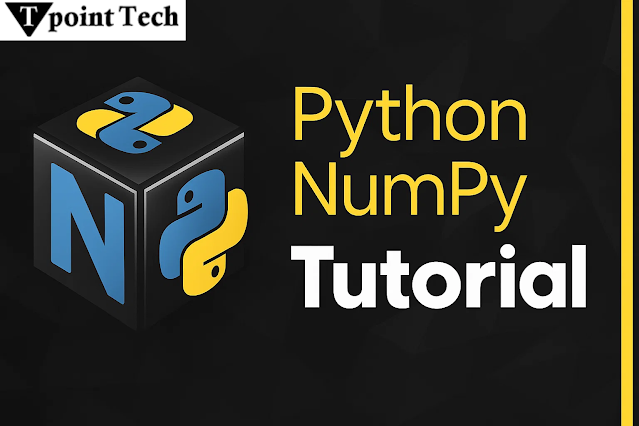Master HTML from Scratch: The Best Learning Path for Beginners
Learning to build websites might seem overwhelming at first, but the journey always begins with a single, powerful step: mastering HTML. Known as the foundation of every webpage, HTML (HyperText Markup Language) is essential for anyone interested in web development, design, or digital content creation. If you're wondering what the best html tutorial point is, you’ve come to the right place. is, you’ve come to the right place.
This guide is crafted to give you a complete overview of HTML, its importance, and a practical path for learning it from scratch. Whether you're a student, career-changer, or just curious about how websites work, this article will help you start strong.
Why HTML is the Starting Point for Web Development
HTML is not a programming language—it’s a markup language. This means it doesn’t perform logic or calculations, but it structures and organizes content on a webpage. Every image you see, every paragraph, and every clickable link on a website is arranged using HTML.
By learning HTML, you gain the ability to create and structure your own websites. It’s the key to unlocking creativity on the web. And with the ever-growing demand for digital content and web presence, HTML skills are more valuable than ever.
What is an HTML Tutorial Point?
Think of an HTML tutorial point as a key stage or concept in your learning path. Each point introduces a foundational piece of HTML that you need to understand and master before moving on. These points might include headings, lists, links, tables, forms, and more.
Rather than rushing through everything at once, taking the time to understand each html tutorial point ensures a solid grasp of the language. It’s like laying bricks—each one strengthens the structure you're building.
The Best Way to Learn HTML for Beginners
Many beginners wonder what the most effective method is to learn HTML quickly and confidently. Based on experience and educational practices, here’s a beginner-friendly roadmap:
1. Understand the Purpose of HTML
Before jumping in, get familiar with what HTML does. It’s used to define the structure of web pages. That includes text, images, links, and multimedia. Without HTML, a browser wouldn’t know how to display content.
2. Learn in Bite-Sized Concepts
Break your learning into small, focused lessons. Start with basic tags like <h1>, <p>, <a>, and gradually work your way to more advanced elements like forms, tables, and semantic HTML. Each of these is a key html tutorial point in your journey.
3. Practice by Creating Simple Pages
Apply what you learn by building mini-projects. A personal homepage, a bio, or a basic portfolio site are great starting points. These practical exercises reinforce your understanding and help you retain concepts better.
4. Explore the Document Structure
A webpage typically includes two main sections: the head and the body. Understanding how metadata, titles, and linked files work within the head is just as important as structuring content in the body. Make this one of your early html tutorial points.
5. Use Visual Learning Aids
Use charts, diagrams, and tag trees to visualize how elements relate to each other. For example, understanding the difference between inline and block elements is much easier when seen in context.
Common HTML Tutorial Points Every Beginner Should Learn
-
Headings and Paragraphs: These define textual structure.
-
Lists (Ordered & Unordered): Useful for steps and bullet points.
-
Links and Images: Crucial for navigation and content richness.
-
Tables: Useful for displaying data in a grid format.
-
Forms: For capturing user input, such as contact forms.
-
Semantic Tags: Like
<header>,<footer>,<section>, for better structure and SEO.
Each topic above is an html tutorial point on its own and plays a vital role in building complete web pages.
Tips to Stay Consistent with HTML Learning
To truly master HTML from scratch, consistency is key. Here are some helpful habits:
-
Practice a little each day — even 20 minutes helps reinforce memory.
-
Create personal projects instead of copying examples.
-
Write down what you learn — keeping a digital or physical notebook of tags and definitions is extremely useful.
-
Join a learning community to get feedback and motivation.
How to Know You’re Making Progress
As you move through each tutorial point, you’ll notice your confidence growing. Signs of progress include:
-
You can structure a web page from scratch.
-
You know when to use specific tags without looking them up.
-
You can identify and correct simple errors in a webpage’s layout.
If these sound like goals you’d like to reach, then you’re already on the best way to learn HTML for beginners—by staying curious and consistent.
Where HTML Leads You Next
Once you’re comfortable with HTML, the next steps include:
-
CSS (Cascading Style Sheets): To make your pages visually appealing.
-
JavaScript: To add interactivity and dynamic content.
-
Responsive Design: To ensure your website looks good on all devices.
But remember, none of these matter unless you first understand and master HTML from scratch.
Conclusion
The best way to learn HTML for beginners isn’t about speed—it’s about building a strong foundation, one tutorial point at a time. HTML is simple to start but rich in application. Every skill you gain now will support your learning in web development and digital design for years to come.
By following a structured learning path and focusing on each html tutorial point, you can become confident in creating well-structured, professional-looking web pages. Whether you’re pursuing a career in tech or just exploring a new hobby, HTML is the perfect place to begin.




Comments
Post a Comment